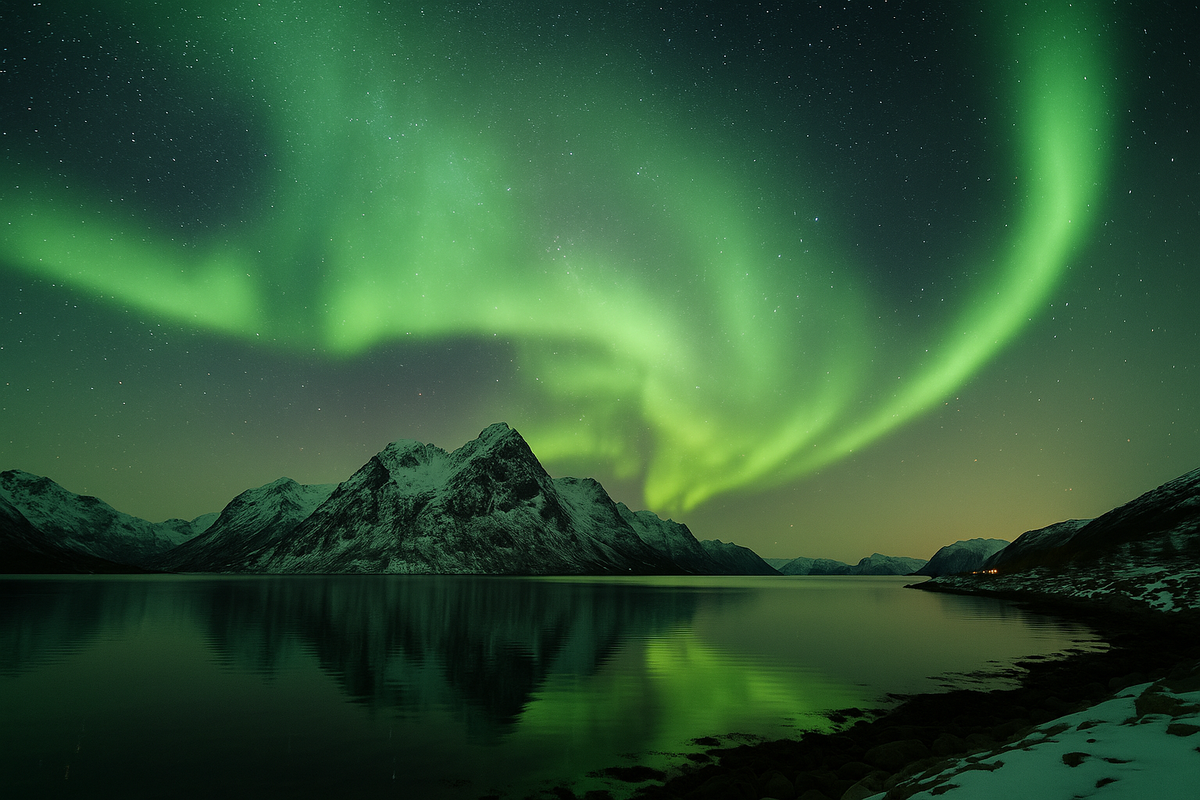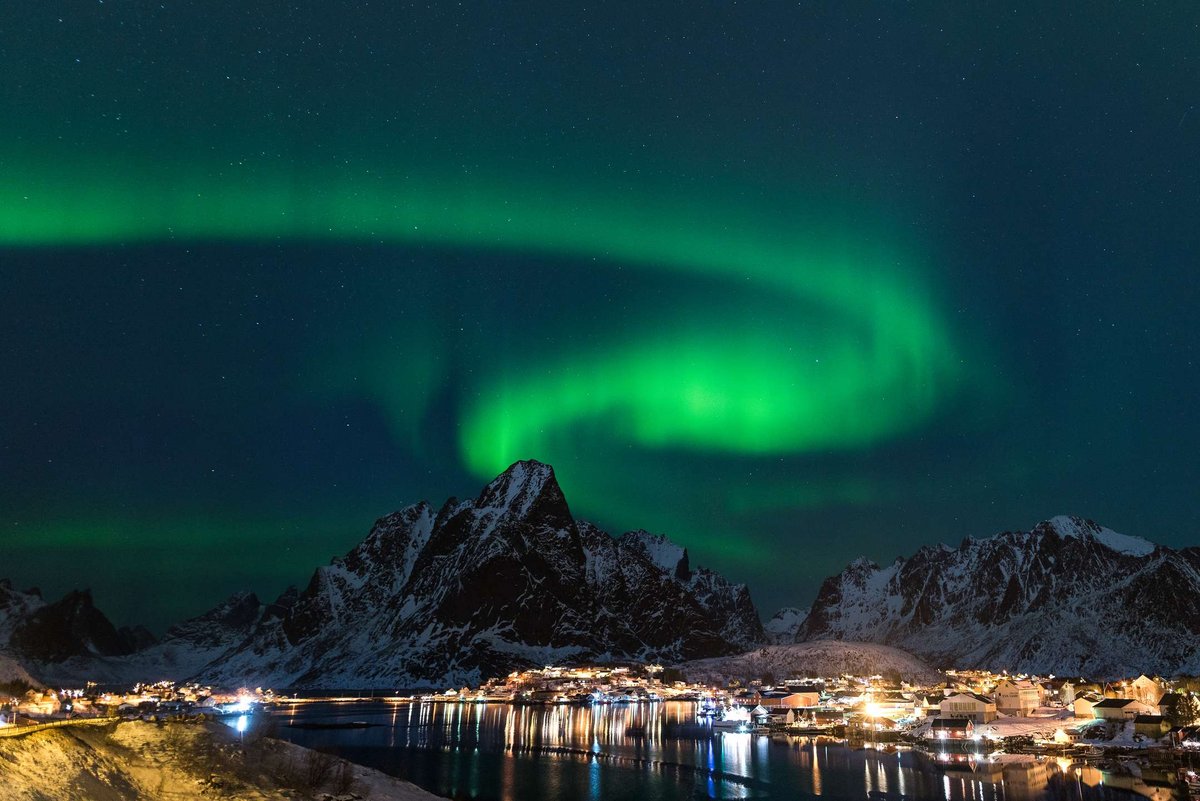✨🌌 Hunting for the Northern Lights: when, where, and for how many days?
A trip to Norway to see the awe-inspiring Northern Lights is the dream come true for many tourists. But anyone who is new to this topic immediately has a lot of questions, which is great because it means you're eager to learn! So, when is the best time to go, where are the best chances of seeing the celestial show, and how long should you wait for your trip to be successful?
In this article, we will answer the main questions most frequently asked by those planning their "hunt for the aurora".

📆 When is the best time to go to Norway?
You can catch the Northern Lights from late September to early April, when the nights are darkest and longest. But every month has its own thing going on.
● September–October — the first appearances of the aurora. You can often find comfortable weather and relatively warm temperatures (around 0°C).
● November–February — peak season: dark nights, frequent auroras, but cold (from -5 to -25 °C) and a high probability of cloud cover and snowfall.
● March–early April — the best time: it's warmer (-5 to +2 °C), the weather is clearer, the nights are still long, and the aurora is often especially bright.
Tip:
If you want the best chance of seeing the northern lights, choose March. This is when there are more clear days and the aurora is most active.
📍 Where are the chances of seeing the Northern Lights higher?
🔹 Tromsø — the capital of the Northern Lights
Tromsø is the most popular city among people who want to see the northern lights. Because it is far above the Arctic Circle (69° N), the aurora can be seen on about 70% of clear nights. The city also has great facilities: tours, car rentals, cafes, heating and equipment.
🔹 Lofoten Islands — a photographer's paradise
Lofoten (67°–68° N) is one of the most beautiful areas. Here, the beautiful natural light show that is the aurora is reflected in the sea and mountains, creating unique landscapes. The only bad thing is the weather, which can be a bit unpredictable and there might be more cloud. So you need to allow for extra time.
🔹 Narvik and the Ofoten region — an alternative without the crowds
Narvik (68° N) and the surrounding area are not as popular as Tromsø, but the skies are often clearer. It is perfect for people who want to avoid big crowds of tourists and see the Northern Lights while skiing down the slopes.
🔹 Southern Norway (Oslo, Bergen) — is it realistic?
The south of the country (58°–60° N) is not as good because of the light pollution from the big cities and its low position on the map. You can only see the aurora here during powerful geomagnetic storms (KP≥5). It's unlikely, but you might get lucky.
Tip:
If the Northern Lights are your main goal, choose the northern part of the country (Tromsø, Lofoten, Narvik).
🗓️ How many days do you need for the trip?
The most popular question from beginners: "How many days should I plan to see the aurora?"
Experience shows:
● 2–3 days is the minimum, but the risk of not seeing the aurora is still high (40–50%).
● 5–7 days is optimal. The chances of seeing the aurora increase to 80–90%.
● 7 days or more — you are almost guaranteed to see the aurora at least one night if you keep an eye on the forecasts and cloud cover.
The longer the trip, the higher the chances of catching the Northern Lights.

🌥️ Dependence of the aurora on cloud cover and geography
The Northern Lights are formed high, high up in the Earth's atmosphere, about 80 to 300 km above the surface. Don't worry if the forecast says it's going to be excellent, but there are thick clouds at an altitude of 1–3 km. These can sometimes completely block the visibility of the aurora.
📊 Probability of Clear Skies — September • December • March
| Region | September | December | March |
|---|---|---|---|
| Tromsø | 50% | 35% | 65% |
| Lofoten | 40% | 30% | 60% |
| Narvik | 55% | 45% | 70% |
| Southern Norway | 45% | 30% | 55% |
🌌 Light pollution map — your main helper
It's such a shame, but the light pollution from our lovely cities can really get in the way of seeing the Northern Lights. And the further away from the bright lights of the city, the more intense and beautiful it becomes.
The best light pollution-free areas near popular cities:
● Tromsø: Kvaløya, Sommarøy (40–60 min drive).
● Lofoten Islands: Uttakleiv, Haukland, and Reine beaches.
● Narvik: mountains near the E6 motorway, village of Bjerkvik (15–20 min).
● Southern Norway: Hardangervidda mountains (but auroras are rare).
🚆 Northern lights from a train window: is it possible?
And if you're looking for something a little different, why not hop on the famous Bergen Railway (Oslo–Bergen)? I absolutely love this route, it's so beautiful! The only thing is that it's a bit tricky to see the Northern Lights here (low latitude, KP ≥5 required). But, if you're lucky enough, you might even catch a glimpse of the awe-inspiring aurora during powerful flashes and geomagnetic storms. This is especially true for passengers on night trains, who often experience the enchanting spectacle in the beautiful Hardangervidda mountain plateau area.
📝 Summary and tips
● Best months: March, February, October.
● Best regions: Tromsø, Narvik, Lofoten.
● Optimal duration: 5 days or more.
● Clear skies are more important than magnetic activity — check the weather.
● Avoid light pollution: use maps and apps.

🎯 Share your experience!
Have you already travelled to Norway to see the awe-inspiring Northern Lights? I'm so excited to hear how it went! Did you manage to see them? And which places and months did you choose? We would absolutely love to hear your reviews and tips! Be sure to leave them in the comments.
We can't wait to share the best stories and most vivid photos with you in our next articles! 🌠





1 comment
Log in to leave a comment